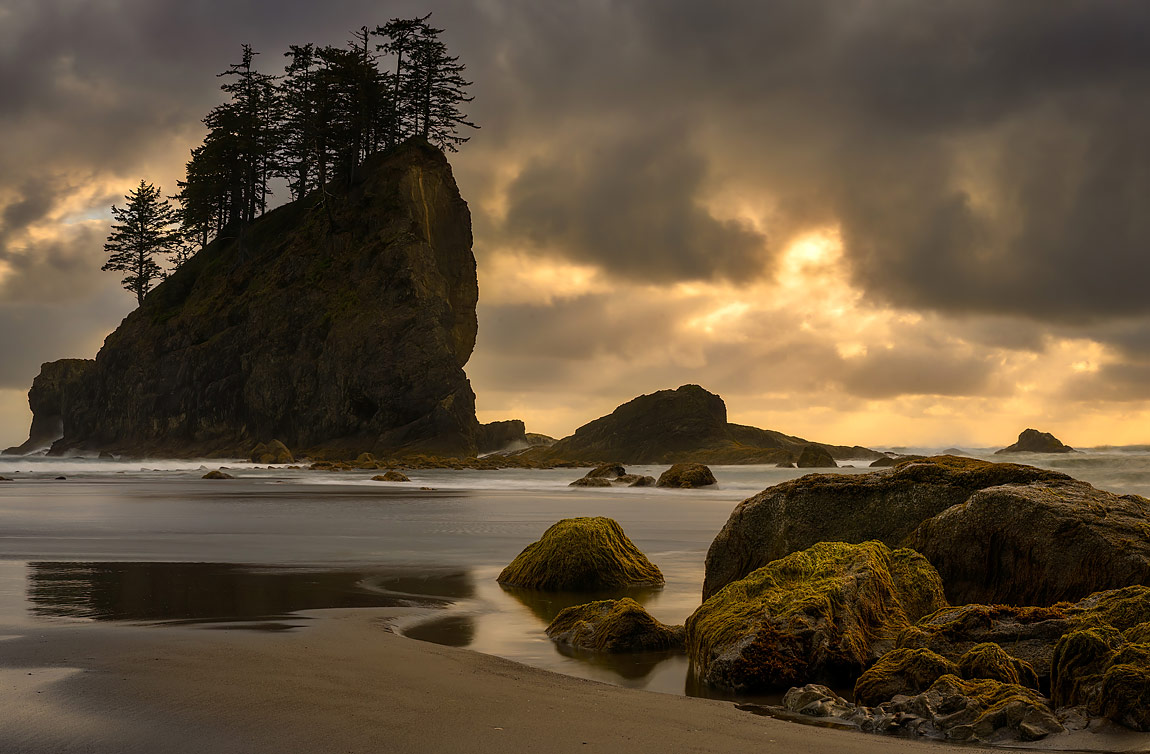I find photographing sea stacks to be a unique challenge. By definition, they exist in coastal locations that are frequently difficult to get into. Tide schedules impact beach access, foreground possibilities, and even the photographer's safety. Wave and surf activity force composition choices regarding whether to include spray and foam with faster shutter speeds or minimize and smooth the water with slower shutter speeds. Sky color and drama is an essential element, as it unavoidably provides the backdrop to the photo. Light direction and time of day determine the detail of the sea stacks and whether they are front, side or backlit.
Often, the sea stack is fairly monochromatic rock, so how does one highlight any color it may contain? Add to all of these factors the physical realities of coastal environments—wind, sand, water spray, "sneaker" waves, footprints, and people who may stray into the shot…and one appreciates a successful and pleasing outcome all the more.
This particular location—Second Beach on the Olympic Peninsula—presents all of the challenges described above. I was drawn to Second Beach two evenings in a row, and this shot was taken during the first session. My goal was to give the viewer a sense of this uniquely beautiful Pacific Northwest beach—to see and "feel" what I saw and felt.
The foreground rock formations and their mossy coats, the standing water left on the beach by random waves borne by the incoming tide, and the seemingly accessible but surprisingly massive sea stack arching into the darkening and unsettled sky all contribute to conveying the slight sense of discomfort I felt as I tried to settle in to compose and execute this shot. Fortunately, my gear and I survived the experience and produced a result I am pleased to share.


